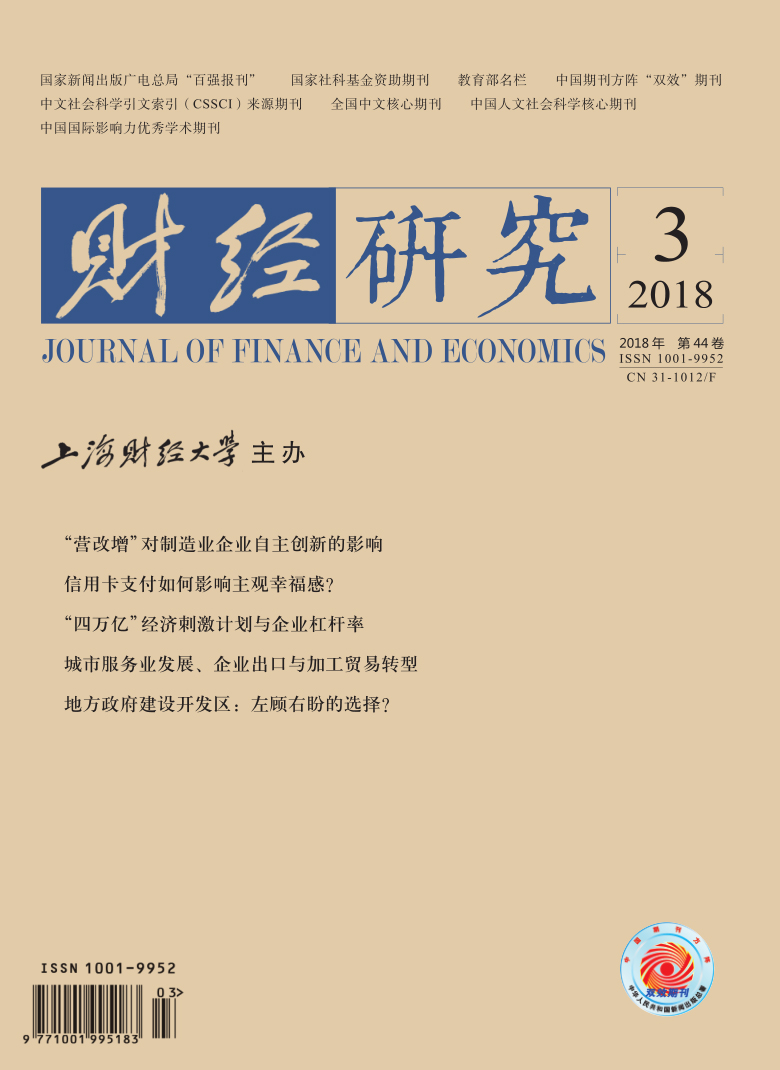Since the twenty-first century, China’s export trade has become significant changes in the export technology structure while realizing the scale growth. Scholars mostly explain this phenomenon from the perspectives of internal factors such as human capital, factor endowments, and technology development, but few explanations are made from the perspectives of the two external factors of ‘government’s hands’ and ‘market hands’. Therefore, this paper examines the impact of Chinese ‘government subsidies’ and ‘market competition’ on enterprises’ export technology complexity and its internal mechanism from the micro perspective, so as to provide theoretical reference for current market reform and the upgrading of trade structure. This paper has research ideas and methods as follows: firstly, it constructs the theoretical model of enterprises’ export technology complexity based on the Hausman(2005), and puts forward related theoretical hypotheses; secondly, it examines the effect of China’s government subsidies and industry competition on enterprises’ export technology complexity by propensity score matching(PSM)and difference-in-difference method; finally, it further examines the internal mechanism about how government subsidies and industry competition affect enterprises’ export technology complexity from the perspectives of R&D and cost channels. This paper arrives at the following conclusions: firstly, government subsidies suppress the promotion of enterprises’ export technology complexity, while industry competition promotes the enterprises’ export technology complexity; secondly, the negative effect of government subsidies on enterprises’ export technology complexity is more significant in the middle-and-high-degree competition industries than that in the low-degree competition industries, and the increase in industrial competition is beneficial to the correction of negative effect of government subsidies on enterprises’ export technology complexity; thirdly, further observation of affecting mechanism shows that R&D incentive effect of government subsidies is significant in the middle-and-high-degree competition industries, namely government subsidies increase enterprises’ R&D investment and then promote enterprises’ export technology complexity, but R&D incentive effect is insignificant in the low-degree competition industries. From a perspective of cost channel, government subsidies reduce enterprises’ export price index significantly, thereby having significant distortion effect on the promotion of export technology complexity, that is, government subsidies play a role in a reduction in enterprises’ export price index, and then lead to enterprises’ extensive growth and endogenous dynamic loss in export technical structure. The marginal contributions of this paper are as follows: firstly, this paper breaks the black box of how government subsidies and industry competition affect enterprises’ export technology complexity, and digs into the relationship between the three at the level of mechanism, providing a new idea for the upgrading of China’s export technology; secondly, this paper uses enterprises’ micro data, and most literature estimates the export technology complexity at industrial and regional levels, which ignores enterprise heterogeneity; thirdly, this paper uses propensity score matching(PSM)and difference-in-difference method to make an empirical analysis; as a policy variable, government subsidies may not be a random event; if we continue to adopt OLS, our conclusions would have serious endogeneity; so our research method overcomes the endogenous problem to some extent. In general, the conclusions are good for us to understand the policy implications of current governmental cuts in export subsidies, and also provide theoretical reference for how to use the government’s hands and market hands to improve export technology structure.
 / Journals / Journal of Finance and Economics
/ Journals / Journal of Finance and EconomicsJournal of Finance and Economics
LiuYuanchun, Editor-in-Chief
ZhengChunrong, Vice Executive Editor-in-Chief
YaoLan BaoXiaohua HuangJun, Vice Editor-in-Chief
Government Subsidies, Industrial Competition and Enterprises’ Export Technology Complexity
Journal of Finance and Economics Vol. 44, Issue 03, pp. 112 - 124 (2018) DOI:10.16538/j.cnki.jfe.2018.03.009
Summary
References
Summary
[1] Lu X D,The transformation and upgrading of export:Is government subsidy an effective policy?[J].International Economics and Trade Research,2015,(10):52−61.(In Chinese)
[2] Mao Q L, Xu J Y. Intermediate goods trade liberalization, institutional environment and productivity evolution[J].The Journal of World Economy,2015,(9):80−106.(In Chinese)
[3] Su Z D, Hong Y J, Liu L Y. Have the production-related subsidies of the government promoted the export of China’s firms?[J].Management World, 2012,(5):24−42.(In Chinese)
[4] Shi B Z. The effects of subsidies on corporate export behavior in China: Empirical analysis based on matching difference-in-difference method[J].Journal of Finance & Economics,2012,(5):70−80.(In Chinese)
[5] Shao M, Bao Q. Government subsidies and firm's productivity—An empirical study based on Chinese industrial plants[J]. China Industrial Economics,2012,(7):70−82.(In Chinese)
[6] Yu J. The role of production subsidies in promoting exports[J]. Statistical Research, 2012,(10):85−89.(In Chinese)
[7] Yu J J, Upgrade mechanism and path of China's export technology structure in the GVC[J]. Industrial Economics Research, 2014,(6):31−40.(In Chinese)
[8] Zhou S M, ShengY, Cheng Y B. Production subsidies, export incentives and resource dislocation:microscopic evidence[J].The Journal of World Economy,2014,(12):47−66.(In Chinese)
[9] Zhang J, Zheng W, Chen Z. Imports and firms' productivity:Evidence from China[J]. China Economic Quarterly, 2015,(2):1029−1052.(In Chinese)
[10] Girma S, Gong Y, Gorg H, et al. Can production subsidies foster export activity? Evidence from Chinese firm level data[R]. CEPR Discussion Paper No.6052, 2007.
[11] Girma S, Gorg H, Wagner J. Subsidies and exports in germany: First evidence from enterprise panel data[R]. IIA Discussion Paper No.4076, 2009.
[12] Gorg H, Henry M, Strobl E. Grant support and exporting activity[J]. Review of Economics & Statistics, 2008, 90(1): 168–174.
[13] Hausmann R, Rodrik D. Economic development as self-discovery[J]. Journal of Development Economics, 2003, 72(2): 603–633.
[14] Hausmann R, Hwang J, Rodrik D. What you export matters[J]. Journal of Economic Growth, 2007, 12(1): 1–25.
[15] Helmers C, Trofimenko N. Export subsidies in a heterogeneous firms framework[J]. Kiel Working Paper No.1476, 2009.
[16] Martincus C V, Carballo J. Export promotion activities in developing countries: What kind of trade do they promote?[J]. The Journal of International Trade & Economic Development, 2012, 21(4): 539–578.
[17] Schott P. The relative sophistication of Chinese exports[J]. Economic Policy, 2008, 23(53): 5–49.
[18] Xu B. The sophistication of exports: Is China special?[J]. China Economic Review, 2010, 21(3): 482–493.
Cite this article
Yu Juanjuan, Yu Dongsheng. Government Subsidies, Industrial Competition and Enterprises’ Export Technology Complexity[J]. Journal of Finance and Economics, 2018, 44(3): 112–124.
Export Citations as:
For
ISSUE COVER
RELATED ARTICLES




 9535
9535  10389
10389

